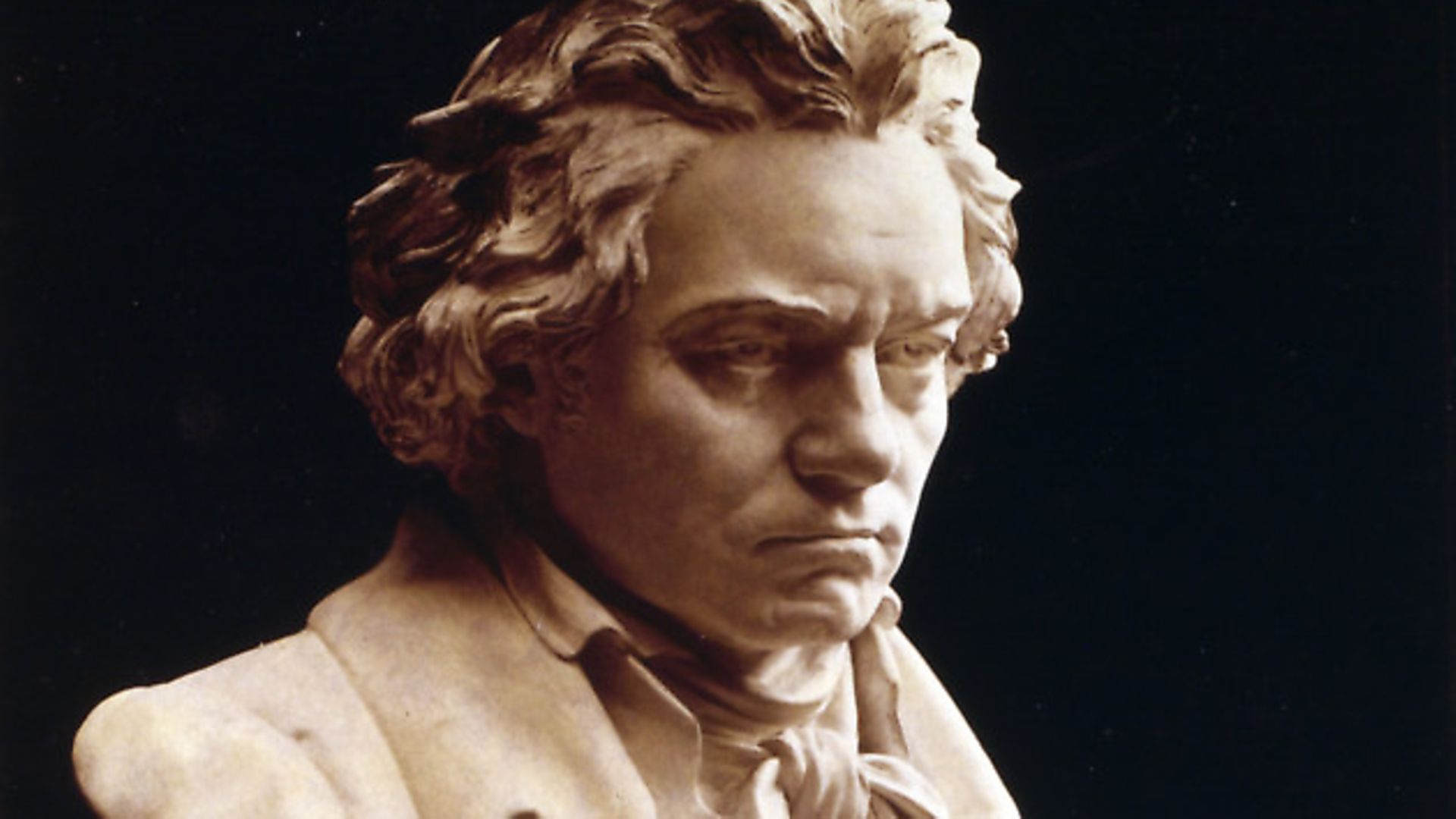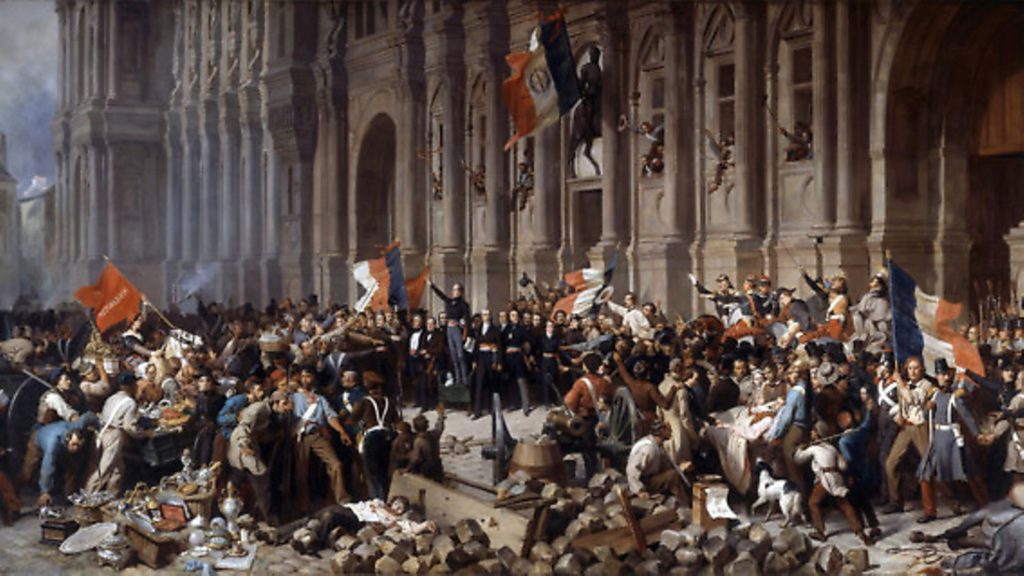
Never mind Ode to Joy, Europe’s real anthem is another Beethoven masterpiece, one which tells the story of the continent

Amidst the drama and dismay of 2016 it is poignant that a BBC Music Magazine survey of the world’s leading conductors this autumn voted Beethoven’s revolutionary Eroica as the greatest symphony of all time.
The 1803 symphony, Beethoven’s third, charged the classical tradition with a new emotional expressiveness, and for more than two centuries has stood as a defiant declaration of the Enlightenment principles of liberty, equality and reason that inspired the French Revolution.
The first symphony of the Romantic era, the Eroica took high music out of the aristocratic salon and into the public concert hall. But like Beethoven’s Ninth, runner-up in the BBC survey, the Third has been enshrined as a forbidding monument of European culture, its authority used to serve many agendas.
For the 1848 republicans the symphony symbolised revolt against European monarchies, and for Marxists the titanic clash and resolution of its themes represented the forces of dialectal materialism.
For the Nazis it championed Teutonic nationalism, and for the Allies victory against fascism.
It is necessary to return to the music itself, and the fraught circumstances of its creation, to rediscover something of the Eroica’s initial shock: a symphony at once political and profoundly personal, a gift for the world and of existential significance for the composer himself.
Beethoven certainly intended the symphony to make a political impact. He was energised by the French Revolution from his youth, the first years of his career coinciding with the storming of the Bastille.
His work is saturated with Jacobin slogans and references to popular Revolutionary music, the Ninth’s unashamedly direct Ode to Joy being the most famous example.
He scorned conventional social hierarchies, and though his music is suffused with a profound spirituality he delighted in mocking religious orthodoxies.
Like so many young radicals Beethoven was initially enraptured by Napoleon, who he hoped would inaugurate a new era of European democracy. The Eroica was conceived when he was writing a cluster of political works, most notably Fidelio, his contribution to the post-Revolutionary ‘rescue opera’ genre celebrating the release of captives into the light of freedom.
His new symphony was to be dedicated to Europe’s liberator. But when he started work on it that bright view was clouded by a growing realisation that French militarism threatened a new form of authoritarianism. On hearing Napoleon had declared himself Emperor, Beethoven famously scratched the dedication from the title page of the manuscript.
But it is less well known that the dedication was reinstated, the symphony continuing to bear the title ‘Bonaparte’ until the publication of the score in 1806, when it became the ‘Eroica’, a simple reference to a ‘great man’.
Beethoven’s ongoing equivocation indicates the Napoleon he had in mind was more a mythical figure representing the ideal of revolution than the flesh-and-blood Emperor.
Indeed it is possible to be too precise about Beethoven’s politics. His absolute focus on music left little time for political activism, and it seems his outspokenness owed as much to a chronic irascibility as any considered political perspective, a ferocious independence that privileged an unswerving dedication to his own demanding muse above all else.
And Beethoven’s desperate personal circumstances when writing the symphony suggest the desire for liberation blowing through it was as deeply personal and spiritual as it was public and political.
His ‘Heiligenstadt Testament’, written shortly before the Eroica, evidences a despair that his encroaching deafness would destroy his brilliant concert career and finally end any prospects of marriage. Only his commitment to his art saved him: ‘[I]t seemed impossible to leave the world until I had produced everything I felt capable of, and so I carried on my miserable existence…’
At this time Beethoven was preoccupied with a myth of a more personal resonance than Bonapartism. He had just completed the score for The Creatures of
Prometheus, a ballet setting for the story of the Greek hero who stole fire from the gods to give humanity the spark of divine creativity. It was a gift won at terrible cost, Zeus binding Prometheus to a mountain where his flesh was torn daily by an eagle’s talons.
This tale of the necessity and cost of excellence would have spoken powerfully to a composer disposed to see himself as a latter day Prometheus, struggling to share his own talent despite being chained to the rock of physical affliction. He was to use a melody from the ballet for the final movement of his new symphony.
Understanding something of Beethoven’s turbulent state when composing the Eroica sheds light on its complexities, but in the end the supercharged music transcends analysis: it is necessary, above all, to listen.
The symphony’s daemonic energy announces itself in the first seconds of the opening movement, a pair of slashing chords opening onto a bright passage in E flat almost immediately cancelled by a sustained C sharp, a disorientating move demanding the listener’s full attention, as if Beethoven was drawing a line separating a new musical world from the old.
The dynamic is sustained as phrases race after each other, glimmering brightly before the movement takes new directions. Though buffeted by storms the music moves relentlessly forward, conveying a sense of rapid clouds crossing a white sun, the shadows moving over a vast landscape.
The transition to the second movement is one of the most shattering in music, the raw energy – representing political or spiritual revolution, or both? – channelled into an intense funeral march. The solemnity is broken only by a brief break into C major, sunlight shafting through a dark sky before the clouds close again.
The third movement presented perhaps the most formidable technical challenge: how to retain the numinous ambience while respecting the requirement of traditional symphonic form that the slow movement should be followed by a dancing ‘scherzo’.
But Beethoven succeeds in freighting it with a certain weight, communicating a sense of rebirth rather than frivolity, preserving the symphony’s unity. The scene is set for the quicksilver final movement, whose variations on the Promethean melody expand and contract like liquid mercury.
It took time for audiences to make sense of the symphony – a shambolic premiere was conducted disastrously by Beethoven himself – but from the start there was recognition that here was something new, a sublime music of spiritual journey through struggle, death, rebirth and apotheosis.
The Eroica became the template for the Romantic era, setting composers free to shape their music as they wished and explore spectacular interior landscapes. It inspired and intimidated, the first of the great Beethoven symphonies that, in the words of James Hamilton-Paterson, ‘loomed their Parnassian bulk on his successors’ horizons, their rarefied peaks glittering, at once unclimbable yet demanding to be tackled’.
Beethoven’s revolution was not without cost, opening the floodgates to a surge of often overwrought Romantic sentiment that overwhelmed the restraint and wit characteristic of the age of Haydn and Mozart.
But listening again to the Eroica it seems impossible to blame him for that. This is a work of emotional force and discipline: both are essential, the work’s power dependent on retaining the tense equilibrium of a drawn bow. It is music that invites rediscovery this year of all years, an uncompromising assertion of an unbounded political and spiritual freedom against all forms of authoritarianism.
Justin Reynolds is a designer and writer









